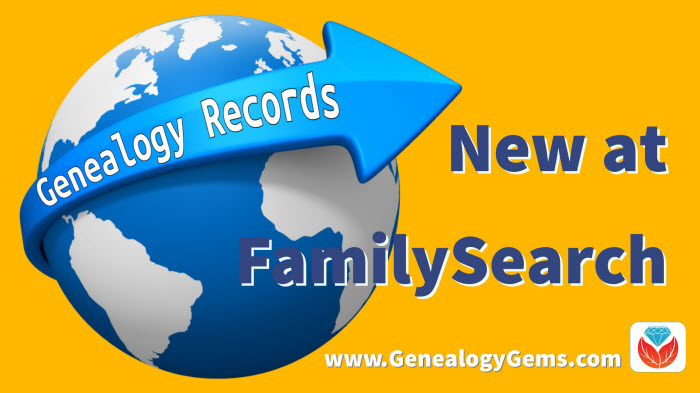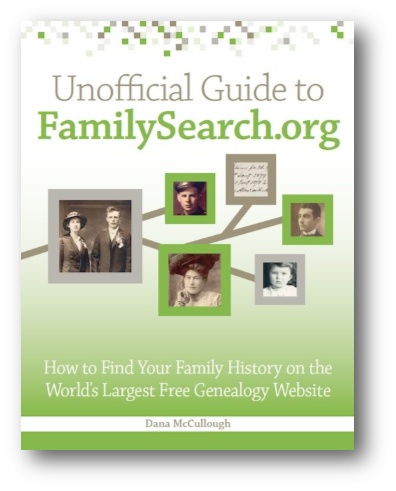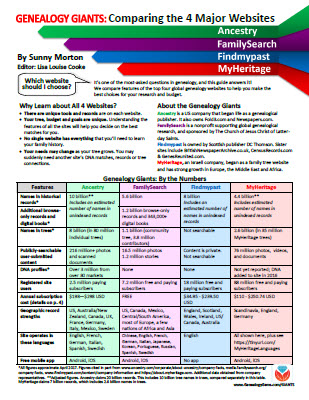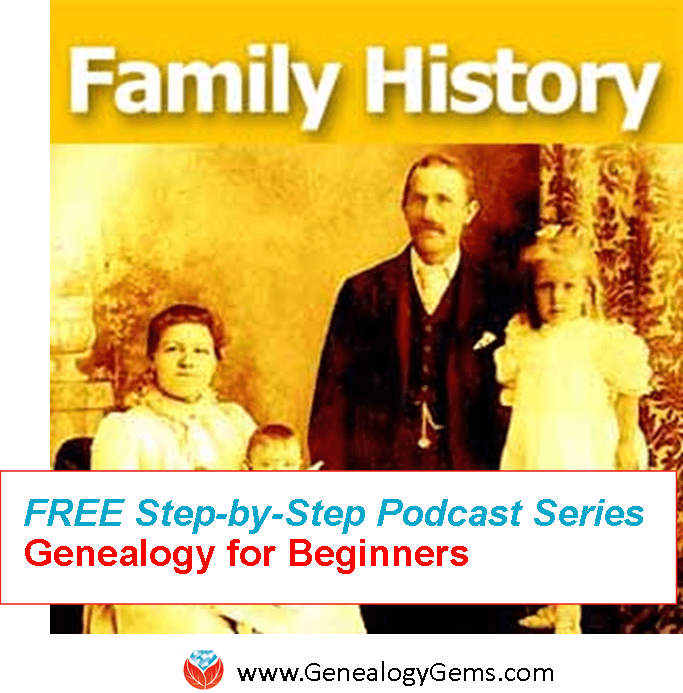by Lisa Cooke | Oct 20, 2017 | 01 What's New, Records & databases
Millions of records from around the world are new at FamilySearch this week, and are completely free! These new collections include Australia, Denmark, Finland, France, Italy, and South Africa. PERSI also got a big update this week at Findmypast, as well as new and updated records for Canada, England, and Ireland.

New collections free at FamilySearch
Australia. The new South Australia, Immigrants Ship Papers, 1849-1940 collection includes immigrants’ ships papers, containing a record of births and deaths aboard, 1849-1867 and 1873-1885. Indexed records in this collection include passenger lists arriving and departing from South Australia. (Original records in the State Records of South Australia, Adelaide.) Get started with Australian genealogy research with these tips from an expert at Legacy Tree Genealogists!
Denmark. FamilySearch has been adding census records for Denmark recently, and the latest new collection is the 1921 Denmark Census. This collection includes over 430,000 images, and these census collections were all provided by MyHeritage and previously from the National Archives of Denmark.
Finland. Church Census and Pre-Confirmation Books, 1657-1915: This collection contains church census books and pre-confirmation books kept by the Lutheran Church in Finland. These records come from a database at MyHeritage, citing Kansallisarkisto (National Archives of Finland), Helsinki.
France. Explore over half a million indexed records for Saône-et-Loire, Census, 1856, a complete indexing of the population censuses.
Italy. The Salerno, Civil Registration (State Archive), 1806-1949 collection includes civil registration (stato civile) records of births, marriages, and deaths within the custody of the State Archive of Salerno (Archivio di Stato di Salerno). Almost 6 million images are in this collection, and availability of records is largely dependent on time period and locality.
South Africa. Lastly, this collection of Pietermaritzburg Estate Files 1846-1950 is also new at FamilySearch. Records include death notices, vital records, wills, distribution accounts, and succession duty accounts.
Need help using FamilySearch? The Unofficial Guide to FamilySearch.org by Dana McCullough provides the guidance you need to discover your ancestors and make the most of the free site’s valuable resources. Learn how to maximize all of FamilySearch.org’s research tools–including hard-to-find features–to extend your family tree in America and the old country.
PERSI update at Findmypast
The Periodical Source Index (also known as PERSI) has had another large update at Findmypast. Almost 11,000 new articles and 30,000 new images have been added, covering Pennsylvania, Wyoming, Toronto, and Yorkshire. PERSI is an excellent resource for discovering articles, photos, and other material you probably won’t find using conventional online search methods.
Click here to learn more about PERSI for genealogy research. Genealogy Gems Premium Members can also check out Premium Podcast episode #135 for more tips on PERSI (sign-in required). Not a Premium Member? Click here to get started!
Canada – New & Updated Collections
From Libraries and Archives Canada: Digitization of the Canadian Expeditionary Force Personnel Service Files. “As of today, 502,740 of the 640,000 files are available online in our Personnel Records of the First World War database…Library and Archives Canada is digitizing the service files systematically, from box 1 to box 10686, which roughly corresponds to alphabetical order.”
Ancestry.com updated two of their collections for Canada this week: Ontario, The Ottawa Journal (Birth, Marriage, and Death Notices) 1885-1980 and the Canada Obituary Collection, 1898-2017. Both of these collections come from microfilmed copies of the newspapers.
England Registrations
Recently announced on Twitter: “The General Register Office for England and Wales (GRO) is piloting a service from 12 October 2017 to provide portable document format (PDF) copies of digitized historical birth and death records. The pilot will run for a minimum of 3 months to enable GRO to assess the demand for this service over a prolonged period.” England and Wales records which are available as PDFs in this extended pilot include births (1837 –1916) and deaths (1837 –1957).
Ireland: Historical Newspaper
A new historical newspaper title was added to the British Newspaper Archive this week for Northern Ireland. The Coleraine Chronicle 1844-1910 was published by Alpha Newspaper Group in Coleraine, Londonderry, Northern Ireland. The collection features nearly 3,500 issues and over 26,000 pages.
 Get the most out of your genealogy records websites subscriptions!
Get the most out of your genealogy records websites subscriptions!
Use the jammed-packed Genealogy Giants cheat sheet by Sunny Morton to quickly and easily compare all of the most important features of the four biggest international genealogy records membership websites: Ancestry.com, FamilySearch.org, Findmypast.com, and MyHeritage.com. Then consult it every time your research budget, needs or goals change. Tables, bulleted lists, and graphics make this guide as easy to use as it is informative. Available in print or digital download.
Disclosure: This post contains affiliate links and Genealogy Gems will be compensated if you make a purchase after clicking on these links (at no additional cost to you). Thank you for supporting the free Genealogy Gems podcast and blog!
by Lisa Cooke | Apr 1, 2014 | 01 What's New, Beginner, Family History Podcast, Vital Records

Listen to the Family History: Genealogy Made Easy podcast by Lisa Louise Cooke. It’s a great series for learning the research ropes and well as refreshing your skills.
Family History: Genealogy Made Easy Podcast
with Lisa Louise Cooke
Republished April 1, 2014
https://lisalouisecooke.com/familyhistorypodcast/audio/fh25.mp3
Download the Show Notes for this Episode
Welcome to this step-by-step series for beginning genealogists—and more experienced ones who want to brush up or learn something new. I first ran this series in 2008-09. So many people have asked about it, I’m bringing it back in weekly segments.
Episode 25: Using Civil Birth Records in Family History
In our last episode we covered marriage records. We finish up vital records in this episode by going back to the beginning: birth records.
There are two major categories: civil and church records. Today I’m bringing in professional genealogist Arlene H. Eakle, PhD, who will helps us to see the challenges we face and the success we can have locating civil birth records. (In Episode 26, Arlene will join me again to walk us through the world of church birth records.)
Here are some take-away tips from our discussion in this episode:
- When you start researching in a new area, learn when government birth records began to be kept. Every state and some cities began birth registration at different times. Today, in some states you order records before a certain date from the local government and more recent ones from the state vital records office. Do your research! Start with this Vital Records Chart from Family Tree Magazine.
- In the U.S., most government birth records were kept by the county, except in New England and independent cities. In the 20th century, the state took buy medication cart over jurisdiction of vital records in most states.
- Birth records often have the names of parents and child and the place and date of birth. You may also find parents’ birthplaces, marital status of parents and even the date of marriage.
- A single locale may have logged births in multiple sources, for example, for those who lived in or outside the city limits, or segregated records for blacks.
- The actual birth record may have been logged as part of a list of names on a columned form. Birth certificates are a modern thing!
- Some records have been digitized and indexed or microfilmed. Check the Family History Library catalog on FamilySearch.org first. If they have birth records, they’ll tell you whether they’ve been digitized or indexed on their site, or whether they’re available on microfilm.
- Of course, many birth records are also available on subscription websites like Ancestry.com, FindMyPast.com, MyHeritage.com and more. If you are a subscriber, check their online holdings, too.
- When ordering a birth record from a government office, they may type up a certificate to send you. That’s nice, but also ask for a photocopy of the original birth entry or record. There’s often more on the original record than the certificate—and you’ll minimize errors by looking at the real record.
Arlene H. Eakle, Ph.D., is the president and founder of The Genealogical Institute, Inc. and a professional genealogist since 1962. She holds both MA and Ph.D. in English History and an Associate degree in Nursing.
by Lisa Cooke | May 6, 2016 | 01 What's New, Records & databases
 Here’s this week’s roundup of new genealogy records online: Australia, France, New Zealand and, in the U.S., records for AK, CO, IL, IN, MA, MD, ME, NH, NY, PA and WI.
Here’s this week’s roundup of new genealogy records online: Australia, France, New Zealand and, in the U.S., records for AK, CO, IL, IN, MA, MD, ME, NH, NY, PA and WI.
AUSTRALIA – NORTHERN TERRITORY – PROBATE. Ancestry.com has a new probate index (1911-1994) for Northern Territory, Australia. The collection includes images of an index “organized first by year range, then alphabetically by surname and given name.”
FRANCE – MILITARY. FamilySearch.org has published a new online index to military conscription records for Saône-et-Loire (1867-1940). Privacy restrictions apply to those born less than 120 years ago.
NEW ZEALAND – PROBATE. More than 350,000 browsable records (and over 10,000 indexed records) have been added to a free FamilySearch.org collection of New Zealand probate records (1843-1998). Original records are sourced from Archives New Zealand offices in Auckland, Wellington, Christchurch and Dunedin.
US – VARIOUS – MARINE. Over 315,000 records are part of a new Ancestry.com collection of applications for seaman’s protection certificates, (1916-1940).
US – VARIOUS – MARRIAGE. Findmypast.com announced the addition of around 10 million additional U.S. marriage records to its growing online collection. According to a press release, “This second installment includes significant additions from Indiana, New York, Illinois, Pennsylvania and Maine.” Nearly a million of these are new to online publication and, at least for now, exclusive to Findmypast. (The collection is part of a FamilySearch partnership.)
US – VARIOUS – PROBATE. Ancestry.com has updated its collections of wills and probate records for Wisconsin, Maryland and Colorado. Coverage by time period and county varies.
US – ARKANSAS – CIVIL WAR. About 172,000 indexed records have been added to a free FamilySearch collection of Arkansas Ex-Confederate Pension Records (1891-1939).
US – MASSACHUSETTS – TOWN CLERK RECORDS. FamilySearch has added nearly half a million indexed names to its free online collection, Massachusetts Town Clerk Vital and Town Records 1626-2001. A new related collection of Massachusetts town records is also available on FamilySearch.
US – NEW HAMPSHIRE. Over 100,000 indexed records have been added to a free FamilySearch.org collection of New Hampshire Birth Certificates (1901-1909). According to the collection description, “Records consist of index cards that give the town and date of the event and often much more information.”
 New genealogy records appear online by the millions every week. Keep current by subscribing to the free weekly Genealogy Gems email newsletter. The newsletter comes with a free e-book by Lisa Louise Cooke on Google search strategies you can use to find MORE genealogy records online that you need. Simply enter your email address in the box at the top of this webpage where it says “Sign up.”
New genealogy records appear online by the millions every week. Keep current by subscribing to the free weekly Genealogy Gems email newsletter. The newsletter comes with a free e-book by Lisa Louise Cooke on Google search strategies you can use to find MORE genealogy records online that you need. Simply enter your email address in the box at the top of this webpage where it says “Sign up.”


 Get the most out of your genealogy records websites subscriptions!
Get the most out of your genealogy records websites subscriptions! 

 Here’s this week’s roundup of new genealogy records online: Australia, France, New Zealand and, in the U.S., records for AK, CO, IL, IN, MA, MD, ME, NH, NY, PA and WI.
Here’s this week’s roundup of new genealogy records online: Australia, France, New Zealand and, in the U.S., records for AK, CO, IL, IN, MA, MD, ME, NH, NY, PA and WI. New genealogy records appear online by the millions every week. Keep current by subscribing to the free weekly Genealogy Gems email newsletter. The newsletter comes with a free e-book by Lisa Louise Cooke on Google search strategies you can use to find MORE genealogy records online that you need. Simply enter your email address in the box at the top of this webpage where it says “Sign up.”
New genealogy records appear online by the millions every week. Keep current by subscribing to the free weekly Genealogy Gems email newsletter. The newsletter comes with a free e-book by Lisa Louise Cooke on Google search strategies you can use to find MORE genealogy records online that you need. Simply enter your email address in the box at the top of this webpage where it says “Sign up.”